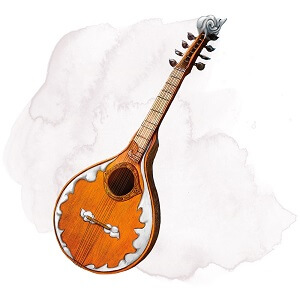Cittern
 A cittern is “kind of a mandolin on steroids. It’s a lute-like instrument similar to an Irish bouzouki but with 10 strings instead of 8 and a little bigger body,” according to veteran cittern player Carol Coronis.
A cittern is “kind of a mandolin on steroids. It’s a lute-like instrument similar to an Irish bouzouki but with 10 strings instead of 8 and a little bigger body,” according to veteran cittern player Carol Coronis.
Citterns first came to my attention while I was taking photos for a local art paper, one of the musicians (Coronis) pulled out an instrument I couldn’t place. It looked like a large mandolin with a long neck. It had double strings like a mandolin or a 12-string guitar, but it was clearly neither of them. When I asked what it was, she replied that it was a cittern. I had never seen one before and I needed to know more about it.
Citterns are based on a 16th-century guitar design, but they are very different from those Renaissance- and Baroque-era instruments. Those had the pear-shaped body with a neck that was asymmetrical and thicker under the treble strings; the head was usually curved and sometimes the neck was shortened.
They were more commonly used in Ireland and Scotland than in England and the leading exponents of the instrument were Scottish (James Oswald, who became court musician partly on the strength of this but was also an excellent fiddle player, and Robert Bremner). Oswald moved to London, bringing with him a craze for playing the guitar. His later published music moved away from Scottish songs, and adopted Italian style.